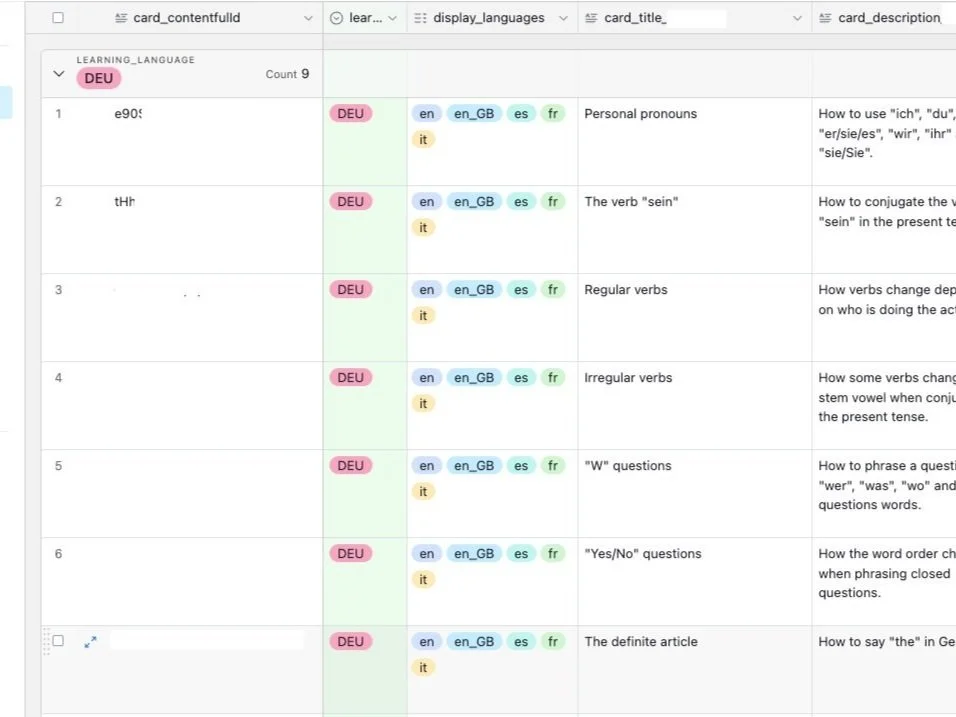Babbel, connecting people through language
My role as Learning Content Quality Manager at Babbel had four main focuses:
Creating, enabling, and supporting quality workflows.
Creating and implementing quality guidelines.
Ensuring the high quality of the learning content through comprehensive quality testing of the content and features.
Maintaining up-to-date, relevant and clear documentation.
Quality Workflows
I was in charge of the published content fixes process, which consisted in reviewing user-reported issues and fixing them when necessary. This required alignment with the customer service agents and the learning content team members who were in charge of the fixes in the different languages.
For that reason, we had a Jira board where we kept track of and assigned the issues. Additionally, we had a Confluence page that answered questions about the workflow, what to do when a ticket was assigned, and how to fill in the different fields and mark the ticket as done.
Quality Guidelines
We worked with multiple freelancers who tested the content in all the different languages and had to learn how to use our different tools. For that reason, we created guidelines that explained to them exactly what to test and what to look for and also how to navigate the content systems to see the content and edit it.
Quality Testing
The testing process that my team and I managed had two main steps: first, a content test done by our language freelancers who focused on the localisation, editing, and proofreading. Second, a staging testing done by us where we tested the functionalities of each specific learning experience and also made content suggestions if necessary. This process ensured that we always published high quality learning content that responded to our users needs.
Video showing one of the learning experiences that I worked on as a quality manager: Grammar Guides with practice items.
Quality Documentation
Besides publishing all the learning content, my team had the responsibility of documenting all the releases. This documentation supported the alignment with and enabled the work of other stakeholders. For example, product teams, customer service agents, or sales people who needed an overview of the display languages in which we offered a particular course or needed to understand how many lessons we had.



